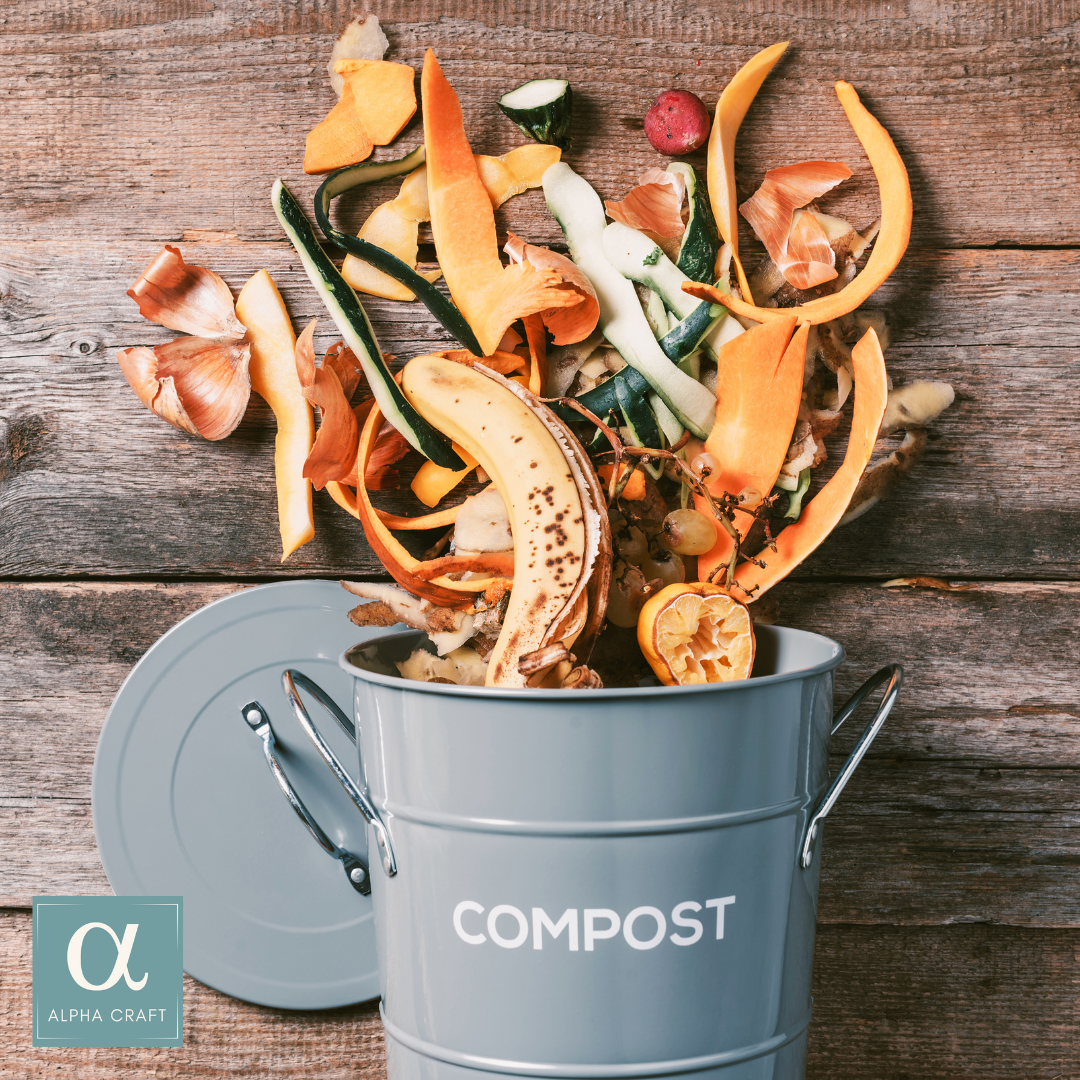Waste Collection for Compost
So you've got a compost bin? Now what? Learn what materials to compost and how to create routines and organization to fill your compost bin and keep it going!

Inventory
Some of the links in this post are affiliate links, and we may receive a commission if you purchase through them.
Tools & Equipment
Kitchen Compost Pail - metal - ceramic - bamboo - plastic
Bin for Household Items
Garbage Can for Yard Waste
Fungible Materials
Newspaper (optional)
Compostable Bags (optional) - These are only compostable through community pick up, not home compostable.
Instructions
For simplicity, this craft will be broken up by domains where waste tends to collect.
Domain #1: The Kitchen
Set up Collection
Place a kitchen compost pail easily accessible to your workspace or waste basket.
Build your Routine
As you clean up your kitchen's workspace, add the items listed above to your compost pail rather than where you would ordinarily put them. For more oversized items, cut or shred them into small chunks.
The more surface area accessible on whatever you place in the compost, the more food available for the microorganisms to eat. So cut, shred, or break down pieces as much as possible to speed up decomposition.
Empty the Pail
Once your pail becomes full, empty it into your compost or a waystation (see Dive Deeper below).
Clean the Pail
Rinse your pail out after each use to avoid an odor and pest buildup. You can do this with the hose or sink. Then, set it in the sun to dry.
Domain #2: The Household
Set up Collection
Place a bin in a location where most of your household waste congregates.
Build your Routine
As your waste comes through your house, place items into the bin. If possible, tear or break apart large items.
Empty the Bin
When this bin gets full, either move it to a larger bin outside the house or add it to the kitchen waste to keep out pests and odors.
Domain #3: The Yard
Set up Collection
Place a large bin in a sheltered location that you can access easily from your yard.
Build your Routine
Determine the items that you can collect from your yard. Green (nitrogen-rich) items should be immediately placed into the compost or waystation. Brown (carbon-rich) items should be placed in your bin to be ready for your next compost pile.
It's best not to leave a fresh pile of greens, particularly kitchen greens, on the top of your compost pile. It can attract flies and animals. So, when you dump your kitchen waste onto your compost, put some of your stored household or yard waste on top.
Modifications
Dealing with Fruit Flies
It's not uncommon for fruit flies to invade your kitchen when you start collecting scraps. The best prevention is always to keep a lid on your pail and dump it frequently. But if these pests do make their way into your home, here are some tricks to getting rid of them.
- Bottle Trap: Poke some holes in a water bottle and fill it with apple cider vinegar. This will attract them into the bottle and trap them.
- Sticky Traps: These sticky traps are sold on Amazon and are very effective.
Make a Waystation
Add a 5-gallon bucket near your kitchen to throw your scraps in as they fill up. This way, you don't have to go all the way to your compost bin every time it is full, and you can keep your workflow going in the kitchen.
Saving Kitchen Scraps for Later
If you are saving up enough material to make a new compost pile, you can freeze your kitchen scraps. Line your kitchen compost bin with a compostable plastic bag. When it's full, tie it and put it in the freezer until you can add it to the compost.
Every craft begins as an alpha craft. Crafts are developed by considering the function and effect of inputs and all the actions needed to create the transformation. They are designed with theory and research but have not been personally tested by any Guild Craft Trade employee or member. When you perform a craft at this stage, it is through your own experimentation (and risk, if there is any).
This designation is part of our mission to build a chain of production for cottage industry. To learn more, see our About page.